new posts in all blogs
Viewing: Blog Posts Tagged with: mims house, Most Recent at Top [Help]
Results 1 - 6 of 6
How to use this Page
You are viewing the most recent posts tagged with the words: mims house in the JacketFlap blog reader. What is a tag? Think of a tag as a keyword or category label. Tags can both help you find posts on JacketFlap.com as well as provide an easy way for you to "remember" and classify posts for later recall. Try adding a tag yourself by clicking "Add a tag" below a post's header. Scroll down through the list of Recent Posts in the left column and click on a post title that sounds interesting. You can view all posts from a specific blog by clicking the Blog name in the right column, or you can click a 'More Posts from this Blog' link in any individual post.
MERRY CHRISTMAS!
Join Leslie Helakoski and Darcy Pattison in Honesdale PA for a spring workshop, April 23-26, 2015. It's a great Christmas present to yourself or a writer friend! Full info
here.
COMMENTS FROM THE 2014 WORKSHOP:
- "This conference was great! A perfect mix of learning and practicing our craft."�Peggy Campbell-Rush, 2014 attendee, Washington, NJ
- "Darcy and Leslie were extremely accessible for advice, critique and casual conversation."�Perri Hogan, 2014 attendee, Syracuse,NY
About eighteen months ago, my writing career pivoted: I decided to commit to self-publishing my work. I’ve not talked about it much because I’ve been so busy being an author and publisher, but I’m going to take time to reflect on the experience and look toward the future.
WHY INDIE PUBLISH?
There are many reasons why I decided to go this direction but in the end, it’s a question of creativity. For many years, I’ve felt hobbled by the traditional publishing world because I can and do write a lot. Independent publishing offered me a chance to write and publish many titles in a short time period. It’s also offered me the possibility of creating a steady monthly income.
Setting Up an Indie Publishing Company
When I committed to funneling all of my work though my own publishing company, I had to make business choices.
What type of company? Self-proprietorship, C or S Corporation. Name of company?
Buy a domain, set up a website, open a business bank account, get a local business license, get a sales tax ID, etc. Don’t discount the business side of indie publishing; but don’t fear it, either. There’s lots of help for these business decisions. In the end, I set up MimsHouse.com — go take a look; I’m excited about this opportunity.
Then, to work! The first eighteen months have been about three things: production, distribution and accounting. I’m assuming that writing is always happening in the background, for it is, in fact, the foundation of everything else.
Accounting. I’m using QuickBooks and this is the hardest thing I do. I just keep plugging away at learning good business accounting and long for the day when I can afford an accountant.
Production. The first question to answer is formats. I decided to try every format possible: paperback, hardcover, eBooks. That sounds easy enough. Ha! It’s complicated. After 18 months, here’s my current configuration.
- Createspace.com paperback in two versions. One version is with my own ISBN and is for general distribution; a second version is with a Createspace ISBN and I only enable it for distribution to Baker and Taylor.
- LightningSource.com (NOT Lightning Spark which is the only section of the company currently open to newcomvers). I currently do paperback and hardcover books here.
- eBooks. OK, this is where it gets tricky because each platform wants a version for their proprietary platforms. Currently, you’ll find my ebooks on Kindle, iBook, Nook, Kobo and various educational publisher’s platforms.
File production for the print and ebooks varies depending on the type of book. Also, technology changes every six months or so, which means that each time I come back to produce files, I have to reevaluate previous production methods to see if they are still the best, are compatible with the current ebook and print standards, and are the most cost-effective.
- Novels that are mostly text-based or short chapter books with b/w drawings. I create the book in MSWord, making sure to be very strict on the style sheets. Word exports to print quality Adobe pdfs for printing on paper. I use Jutoh to convert these to ebooks.
- Color picture books are laid out in Adobe InDesign, which a access via a $20/month subscription; the October, 2014 update to InDesign has made export to ebooks simple. I mean VERY simple. I tried the mid-year release of Kindle Kid’s Book Creator program and found it easy to use; however, there are two main problems with it. First, it only creates the .mobi files for Kindle, and I still had to create epub files for other distributors; second, it creates a bloated file which means you have huge download costs from Kindle. At 70% royalty, they charge the publisher $0.15/MB download fee, which amounts to a “printing cost.” A file created with the Kindle Kid’s Book Creator program is easily 6-8 MB, or $0.90-$1.20 per download. You have two choices: charge a lot for the book or drop to the 35% royalty which doesn’t charge a download delivery fee.
Examples:
$2.99 at 70% payment, 8MB file
$2.99 x 70% = $2.093 – $1.20 delivery fee = $0.893/book
$2.99 at 35% payment
$2.99 x 35% = $1.0465/book (NO delivery fees at this rate)
InDesign, on the other hand, takes the same book and creates files of 3-4MB.
$2.99 at 70%, 4MB file
$2.99 x 70% = $2.093 – $0.60 delivery fee = $1.493/book
My choices, then are to profit $0.89, $1.05, or $1.49 for each eBook priced at $2.99.
InDesign’s smaller file sizes mean money in my pocket, AND flexibility in what I charge. I could drop prices to $1.99 for a sale and still make a profit of $0.79/book; it’s my choice.
Math. It runs the business and it affects production methods!
Illustrations. Another problem of production has been obtaining illustrations for my color picture books. Fortunately, the first couple books were done in a joint business arrangement with Kitty Harvill. Since then, I’ve had to find funds to pay illustrators. Behance.net has been a great place to find new illustrators. That is Adobe’s social media site for artists, where they post their portfolios. Ewa O’Neill’s debut books will be out in February; and Rich Davis, a local longtime friend and amazing illustrator, struck a deal for b/w line drawings for my short chapter series. So, I drew from friendships and from an artist’s social media site to find quality, exciting art. This has been one of the most creative and fun parts of the process, to work with some great talents to produce amazing books. I’ve learned a lot about being an art director and working with artists—it’s just fun.
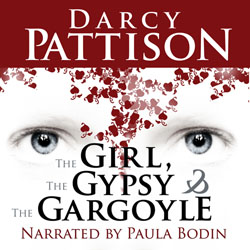
AudioBooks. Amazon’s ACX program is in its infancy, but it offers authors an entre into the audiobook world. By hooking you up with a group of narrators who will audition for your book, you have control of the process and can end up with some exiting audio books. It’s hard to say which is my favorites: I love the actress Paula Bodin’s reading of my novel, The Girl, the Gypsy, and the Gargoyle; she truly brings the story to life. Monica Clark-Robinson brings her acting skills to the production of Saucy and Bubba, which is especially exciting because she’s a local actress and author. Josiah Bildner knows how to crack a joke! His narration of the Aliens Inc, Series, Book 1: Kell, the Alien shows his genius in timing of comedy.
Distribution. The third piece of the puzzle for the last eighteen months has been distribution. This means I’ve had to think hard about where my books might sell. Who is my customer? Where does that customer already buy books? What price points do they want/need/like?
Because I mostly write children’s novels and picture books, eBooks haven’t been as big a factor (though, I think that is changing in interesting ways). My customers are parents, teachers, and school librarians. Teachers and school librarians buy from education distributors, rather than from the trade markets. They can and they do buy from Amazon, B&N and other online places, of course. But the bulk of their budget is spent at places that cater to their needs.
I’ve picked up distribution from Follett School Solutions, Mackin, Permabound, and Child’s Plus. The first three also have emerging eBook platforms which I think will become increasingly important. It means more production work because they want yet another format! It’s just a different type of pdf to export, but it means another step.
Pricing. Also, this sales channel brings some challenges in pricing. 1-to-1 pricing means a school building buys one ebook and has the rights to put it on one device only. 1-to-many pricing means a school building buy one book and has the right to put it on an unlimited number of devices.
Naturally, educators prefer the 1-to-many pricing structure; but this is so new that there’s no best-practices standards on how much extra to charge. You don’t want to leave money on the table; however, you want the pricing to be attractive.
I’m told that some publishers are asking 2x, 5x or even 15x the 1-to-1 price. But no one really knows what price structure will work. For a Newbery Award winning book, you could likely charge 20x—which in effect gives a full class set to a school building—and educators will gladly pay it. In other words, the popularity of a title, the likelihood of its use as a class set, and factors such as this should determine the 1-to-many pricing.
Also interesting is that the school pricing tends to stay at or near the suggested retail pricing, with few discounts. Translation: you’ll make more per book.
The first eighteen months have been busy. I’ve learned to pace the writing with production and marketing efforts. I’ve set up production protocols that allow me to be efficient in putting the books into multiple markets. And I’ve picked up distribution from education publishers, while also making sure I cover the digital and print distribution channels.
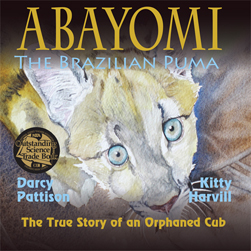
2015 NSTA Outstanding Science Trade Book.
Because I come from the traditionally published world, I also decided early on that I would submit books for awards. That meant Mims House joined the Children’s Book Council, which gave me access to a variety of programs. In November, 2014, I learned that my nonfiction picture book,
Abayomi, the Brazilian Puma: The True Story of an Orphaned Cub was named a
2015 NSTA Outstanding Science Trade Book.
I was ready. I already had the book in distribution to all major channels, including education distributors. Immediately, I sent press releases to those channels—and sales have picked up. I expect that early next year will bring even more sales for this award-winning book.
Someone once said that marketing means you produce demand for your books. You do that first and foremost by writing and publishing a great book. After that, you have to break through the noise and get noticed; and then you need to keep the book in the foremost of your customer’s mind for as long as possible.
Marketing is what I’ll focus on for the next year. I’m trying everything from online ads to awards programs to social media blasts. Ask me at the end of 2015 what I’ve learned about marketing.
WHAT I’VE LEARNED IN THE LAST 18 MONTHS
- Indie publishing is refreshingly creative. It’s not about control for me, though, I hear that sentiment often. Instead, it’s about creativity. It’s opened creative channels for me in the production of the books; and it will continue to challenge my creativity in marketing. Both of those have challenged the foundation of selecting stories to write: I now start out with a stronger consideration of audience. I like how the creativity builds as I engage in more aspects of the book production, distribution and marketing. Working with creative artists and audio narrators is inspirational, too.
- Patience is crucial. I went into this with a long-term perspective. As an indie publisher, I am a small business owner. In the U.S., most small businesses fail in the first year; most don’t make a profit until their fifth year. From day one, I had books in distribution so I’ve made money. I sold a website domain for a nice profit and that added to my reserves. Financially, the cost to enter this business is extremely low, and it’s been easy to build up the income levels.
Still, patience is crucial because as an indie publisher I can’t afford the book launch splash; instead, I must rely on a slow growth of a title as word-of-mouth grows. You hear stories of fantastic sales of ebooks—but that’s rarer for children’s books. It’s just a different market, and I constantly remind myself that I am building for a future so I don’t need to be impatient.
- Try everything. Test everything. This year, I’ve said YES to everything I could. I’m testing to see where and how I can reach an audience that likes and will buy my work. I’ve done Facebook ads, GoogleAdwords, displayed at various local and regional events, set up a sales channel on my own website, and much more. I don’t have lots of capital, so I’m careful in choosing where to put effort; but my attitude is to try something new if at all possible. Take risks.
- Write. Through all of this, the writing remains. It’s the foundation for everything else.
CHALLENGES AND PREDICTIONS FOR 2015: Indie Books for Children
- Pay attention to the education market. The education market for ebooks is poised to explode; I hear of more and more schools going 1-1, or one ipad/tablet for each child. I think the education distributors such as Follett, MackinVIA, and Permabound are going to be players, but also look for the sleeping giant, Apple, to come on strong. Since the iOS8 update this fall included iBooks as a native app, I’m moving many more books on Apple than on Kindle. It’s going to be a wild ride as companies jockey for position and as the pricing structures shake out. I’m working hard to put more books on the iBook platform; see my author page on iBooks.
- Hard work. Indie publishing will continue to expand, but I think the boom of 2008-2014 has played out. Now, you’ll have to dig in and work harder to get noticed. It’s only limited by your imagination, your work ethic and a bit of luck. And beware of rip-offs who promise to make your book a best seller!
- Change is inevitable; be ready to adapt or pivot. 2014 saw a rise in the subscription model of selling books and a host of startups that touted one way or another of promoting, marketing and selling books. Inevitably, most of these will fail; but no one knows which will fail and which will succeed. You’ll have to pay attention to the unfolding events and take advantage of sales opportunities as they arise.
- Global media company. One interesting idea is to consider myself a global media company. This year, I did an online video course of 30 Days to a Stronger Novel to accompany a book’s launch. And illustrator Kitty Harvill, who lives in Brazil half the year, is working on a Portuguese translation of Abayomi, the Brazilian Puma. (If it goes through that will be my 9th language! English, Spanish, Swedish, Danish, Norwegian, Arabic, German and Taiwanese Chinese.) Will the digital world allow for an expansion into other media and a global market? Of course. It’s a question of how to approach it. It’s one area I’ll be paying attention to in 2015, whether or not I actually make direct moves on either front. I’ll be reading anything possible about the expanding German market, and perhaps experiment (Try anything!) with more video or audio.
- One key to success: own your own audience. You’ll see less emphasis on social media activity such as growing a Facebook Fan page. As the major social media companies work to expand income, they continually change the rules. In essence, they own your audience, not you. Instead, smart authors will build their own mailing lists of loyal fans who want to hear about new releases. Get the Fiction Notes newsletter and the MimsHouse newsletter here.
In the end, all of us in publishing are asking one question: How can I put more of my books into the hands of the right audience in the most profitable manner? We’re answering that in a myriad of ways. How do you answer that question?

By:
Sue Morris,
on 7/13/2014
Blog:
Kid Lit Reviews
(
Login to Add to MyJacketFlap)
JacketFlap tags:
Middle Grade,
children's book reviews,
middle grade novel,
darcy pattison,
Hansel and Gretel,
runaways,
alcoholism,
family drama,
family dynamics,
5stars,
Mims House,
Library Donated Books,
Saucy and Bubba: A Hansel and Gretel Tale,
wicked stepmother,
Add a tag
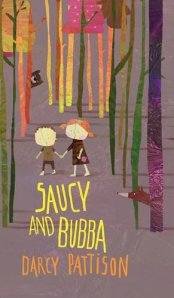 .
.
Saucy and Bubba: A Hansel and Gretel Tale
written by Darcy Pattison
Mims House 1/20/2014
978-1-62944-009-5
Age 8 to 14
.
“In this modern-day Hansel and Gretel story, Saucy and Bubba struggle to get along with Krissy, their alcoholic stepmother. One freezing night, Krissy locks Saucy out of the house and Saucy must sleep in the barn. In a desperate move, Saucy and Bubba run away to their aunt’s house—except Aunt Vivian isn’t home. Trying to take care of Bubba for several days forces Saucy to take charge of her own life and accept a terrible sacrifice in order to find safety for herself. This is the simple story that weaves through the tangled threads of family and
Opening
“Saucy Dillard loved gingerbread days.”
Review
Since Saucy and Bubba’s mother died, daddy has been very lonely. He hired Krissy to babysit the two kids, and then fell for the young alcoholic woman. Daddy married her and has been googoly-eyed for her ever since. Stepmom gets away with her actions because her hubby is in denial of the problem, preferring to blame his oldest child. That is more than enough to topple any eleven-year-old girl. Add acting as Bubba’s guardian—self-appointed—in charge of his happiness in addition to his safety, and the recipe for disaster more than doubles.
Saucy and Bubba would make a good story for social work students. It covers the same ground without the dryness of an adjunct text. In addition to alcoholism, the story involves child abuse and neglect, a mean stepparent, an absentee father, and runaway children. Pattison also throws in a possible pedophile, just in case there is not enough social angst. The pedophile is nothing more than bait, used to unite Krissy and Saucy in battle. I was surprised Saucy told Krissy the problem, given her justified fear of the woman, but the two make an insurmountable team—possibly because they are so similar—while rescuing Bubba from danger.
Saucy and Bubba is a dysfunctional family drama. The father, who I think is the biggest problem, is an absentee father, not because he is gone a lot as a long haul trucker, but because he overlooks most all of what his new bride does to his children, preferring to blame the eldest child instead of the real problem, his wife. In regards to Krissy leaving the kids on an outing (to get gas), going to a bar (getting drunk and driving home) and never picking them up (they walked home in the cold and dark), he says to his oldest, eleven-year-old Saucy,
“Krissy isn’t the problem. You are. Next time, you stay put.”
The best part of the story is during the runaway. All that before then is set-up. The kids have such a long way to go they must take a greyhound and then walk several miles. Bubba is but seven-years-old, naïve, and trusting. He nearly becomes the victim of the same pedophile, twice, all for the want of a cookie. He is also a genius with numbers. The two run into a few colorful characters, like the young teen working the bus station soda counter. He advises Saucy to take care of herself first before trying to care for another. In the end, he is spot on and that is exactly what Saucy must do to save her entire family. The ending did surprise me, but it is a great solution and the best for Saucy. If only all family problems could be solved so easily.
How is this A Hansel and Gretel Tale? Pattison uses several elements from the original story. Krissy is the wicked stepmother—and the evil gingerbread witch. Bubba is Hansel, using white stone as markers to follow home. Just as in Hansel and Gretel, the father abandons his kids, but instead of leaving them in the woods, he ignores the problems and leaves the kids with the cause.
Middle grade and older kids who like family dramas will enjoy Saucy and Bubba. There is enough angst to sell the story and enough heart to keep the reader interested in what becomes of the two kids. I still do not understand why Pattison had Saucy run and hide near the end, after she was so close to everything she worked for, but it did add one more element of suspense and force the father to open his eyes, maybe for the first time since marrying Krissy. Oh, well, there’s the reason. Pattison is a formidable writer whose work has been translated into numerous languages. Saucy and Bubba is another winner in a long line of winning stories.
SAUCY AND BUBBA. Text copyright © 2014 by Darcy Pattison. Reproduced by permission of the publisher, Mims House, LITTLE Rock, AR.
Purchase Saucy and Bubba: A Hansel and Gretel Tale at Amazon—B&N—Book Depository—Mims House—your favorite bookstore.
.
Learn more about Saucy and Bubba: A Hansel and Gretel Tale HERE.
Meet the author, Darcy Pattison, at her website: http://www.darcypattison.com/
Find other Pattison books at the Mims House website: http://mimshouse.com/
.
New in 2014 by Darcy Pattison

Aliens, Inc. Book 1: Kell, the Alien

Aliens Inc. Book 2: Kell and the Horse Apple Parade

Aliens Inc. Book 3: Kell and the Giants

VAGABONDS
.
.
.
.
.
.
Also by Darcy Pattison, Click Title for Review
Wisdom, the Midway Albatross
Desert Baths
Abayomi, the Brazilian Puma: The True Story of an Orphaned Cub
11Ways to Ruin a Photograph
.
.
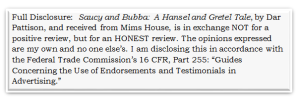
.
.
copyright © 2014 by Sue Morris/Kid Lit Reviews
Filed under:
5stars,
Library Donated Books,
Middle Grade Tagged:
alcoholism,
children's book reviews,
darcy pattison,
family drama,
family dynamics,
Hansel and Gretel,
middle grade novel,
Mims House,
runaways,
Saucy and Bubba: A Hansel and Gretel Tale,
wicked stepmother 







By:
Sue Morris,
on 4/17/2014
Blog:
Kid Lit Reviews
(
Login to Add to MyJacketFlap)
JacketFlap tags:
a changing world,
Abayomi,
Darci Pattison,
forest depletion,
pumas,
Children's Books,
Picture Book,
NonFiction,
Series,
Brazil,
wildlife,
conservation,
wisdom,
5stars,
Mims House,
Library Donated Books,
Kitty Harvill,
Add a tag
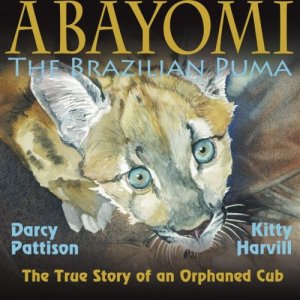 .
.
Abayomi, the Brazilian Puma: The True Story of an Orphaned Cub
by Darci Pattison & Kitty Harvill, illustrator
Mims House 2014
978-1-62944-001-9
Ages 6 to 8 32 pages
.
“From the award-winning team that brought you WISDOM, THE MIDWAY ALBATROSS, comes a new heart-warming story of an orphaned puma cub. A mother puma, an attempt to steal a chicken, and an angry chicken farmer—the search is on for orphaned cubs. Will the scientists be able to find the cubs before their time runs out?
In this “Biography in Text and Art,” Harvill takes original photos as references to create accurate wildlife illustrations. Pattison’s careful research, vetted by scientists in the field, brings to life this true story of an infant cub that must face a complicated world alone—and find a way to survive.”
Opening
“In the far south, in Brazil, a puma cub was born in the early spring month of October 2012.”
The Story
Brazil, once covered by deep forests, now houses more people in cities and villages. To keep their cars moving more sugar plantations took over much of the remaining forest. Pumas, and other wild animals, must live closer to man and find it more difficult to hunt for food. One night, a female puma spotted some chickens in a farmer’s barn. Their normal diet of armadillos, capybaras, and ring-tailed coatis were getting hard to find. The puma needed to feed her cub and the chickens were easy prey. But she fell victim to a farmer’s trap. Before wildlife officials could get to the farm and safely remove the puma, she died.
Alone, hungry, and no mother to help, her cub had to hunt, but would he know how? Wildlife officials followed the mother puma’s trail trying to find her cubs but came up empty. Twenty-three days after his mom left and never returned, dogs a mile away from home cornered the cub. Dehydration and starvation ravished the cub’s body, stealing the energy he needed to walk. He staggered from place to place. This time wild life officials safely caught the cub, naming him Abayomi, which means happy meeting in the Tupi-Guarni native language. Scientists did what was needed so this little guy could return to the wild. Were they successful?
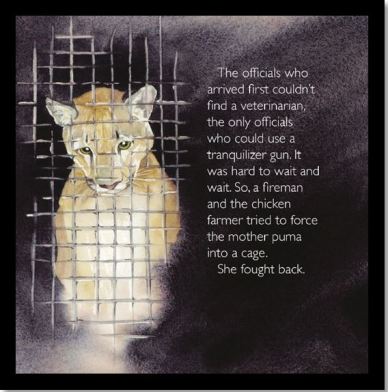
Review
The team of Darci Pattison and Kitty Harvill have made their second successful wildlife children’s book about a fascinating survivor. The first, Wisdom, the Midway Albatross, garnered starred reviews. Abayomi will undoubtedly do the same. With simple language and thoughtful prose, the story of Abayomi will come to life for schoolchildren, many of whom live in urban areas and have never seen a puma. Though the death of the mother puma was most likely gruesome, Pattison wrote,
“. . . She fought back. Once, she hit her head hard against the side of the cage and was dazed. After hours of struggling, she died.”
The illustrations were just as easy on the subject. You see the puma in a cage and some chickens in a roost, but nothing more. Not one spittle of blood mentioned or seen. Children should not experience nightmares after reading Abayomi. All of the illustrations are soft watercolor renditions of actual locations in this true story, completely vetted by experts. Each image is realistic yet gentle on the eyes. The scrawny cub, shown from the backside, does not noticeably display starvation. The hips are noticeably larger due to a lack of abdominal body fat, yet not so much as to scare even the youngest children.
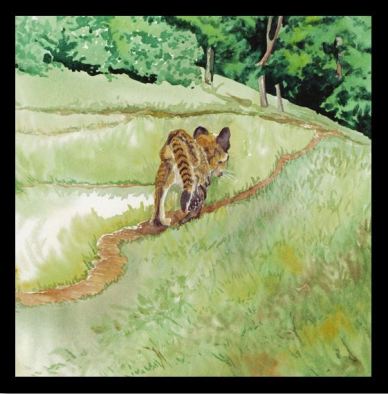
The book concludes with some facts about Abayomi, the Corridor Projects, and urbanization, along with some resources children can look up for more details. Children could write an interesting book report after reading Abayomi the Brazilian Puma. Pattison and Harvill make a splendid team that children, parents, and teachers should not ignore. Conservation and wildlife experts and scientists fact check Pattison’s research. Harvill uses photographs taken on site when painting her illustrations. The pair have made clear choices that make the books assessable to younger children, while still interesting older kids. (Yes, like myself.)
As with Wisdom, the Midway Albatross, Abayomi, the Brazilian Puma should be in school libraries and homeschooling bookshelves that cover wildlife, conservation, or the changing world. As starting points, Abayomi and Wisdom, are great resources for children. While not an expansive missive, these two books will guide students to other resources and further knowledge. The two books also allow younger children to learn about these subjects in a mild, non-scary manner that will peak curiosity, not provoke nightmares.

ABAYOMI, THE BRAZILIAN PUMA: THE TRUE STORY OF AN ORPHANED CUB. Text copyright © 2014 by Darci Pattison. Illustrations copyright © 2014 by Kitty Harvill. Reproduced by permission of the publisher, Mims House, Little Rock, AK.
.
Learn more about Abayomi, the Brazilian Puma HERE.
Get your copy of Abayomi, the Brazilian Puma at Amazon—B&N—Mims House—ask for it at your local bookstore.
.
Meet the author, Darci Pattison, at her website: http://www.darcypattison.com/
Meet the illustrator, Kitty Harvill, at her website: http://www.kharvillarte.com.br/artist.html
Find more Mims House stories at the publisher’s website: http://mimshouse.com/
.
Also by Darci Pattison

Saucy and Bubba, a Hansel and Gretel Tale

Vagabonds
.
.
.
.
.
.Also by Kitty Harvill
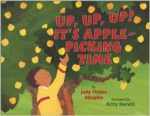
Up, Up, Up! It’s Apple-Picking Time
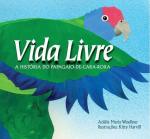
Vida Livre (published in Brazil)
.
.
.
.
.
Also New from Mims House

The Girl, the Gypsy, and the Gargoyle
.
.

Filed under:
5stars,
Children's Books,
Library Donated Books,
NonFiction,
Picture Book,
Series Tagged:
a changing world,
Abayomi,
Brazil,
conservation,
Darci Pattison,
forest depletion,
Kitty Harvill,
Mims House,
pumas,
wildlife,
wisdom 







Follow our Pinterest Boards
In the space of a week, I’ve gone from the heights to the depths.
First, the good news.
Last week, I was thrilled to learn that my book, Wisdom, the Midway Albatross was given a starred review in Publisher’s Weekly. This book has defied all the odds–just as Wisdom has done.
“. . .Pattison writes crisply and evocatively, and her closing notes provide a wealth of information and resources for readers interested in Wisdom and her fellow albatrosses.” Publisher’s Weekly 2/18/13
The story is about a 60+ year-old albatross who lives on Midway Island and survived the Japanese tsunami. For over 60 years, she has soared over the North Pacific, only coming to shore to breed. Scientists estimate that she has hatched over 35 chicks, including one each year for the last five years. Last year’s chick was named Wonder and this year’s chick–just a couple weeks old now–was named Mana’olana, Hawaiian for Hope. Yes, a 62-year-old bird just hatched a new chick!
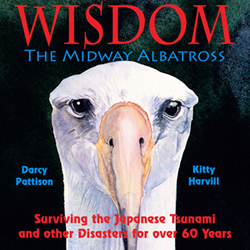 After the 2011 Japanese tsunami, I heard her story of survival and within six weeks, I had contacted scientists, researched her life and times and written her story. I contacted about twenty publishers and none would publish it. I decided to work with my long-time friend, wildlife artist Kitty Harvill to publish it from my own imprint, Mims House. Now, I’ve been in this business long enough to know that it would be a long hard road. But it was an important story, one I couldn’t let go.
After the 2011 Japanese tsunami, I heard her story of survival and within six weeks, I had contacted scientists, researched her life and times and written her story. I contacted about twenty publishers and none would publish it. I decided to work with my long-time friend, wildlife artist Kitty Harvill to publish it from my own imprint, Mims House. Now, I’ve been in this business long enough to know that it would be a long hard road. But it was an important story, one I couldn’t let go.
It won the Children’s Book category of the 20th annual Writer’s Digest Self-Published award, a $1000 cash prize. So, I submitted it to Publisher’s Weekly for review and it earned a Starred Review! Right now, it is an Amazon bestseller (for the spring season, the ebook version is only $0.99).
The starred review was especially nice, because it was a validation of all the work we had put into the book. Go look for yourself: self-published can be quality.
Next, the Bad News
Publishing has weird math. 9 months + 5 revisions = NO.
The rejection I got yesterday was shocking and painful.
For nine months, I have been working with someone on a project and it has developed in amazing ways. The critiques were spot-on and I revised like crazy. I deleted chapters, added chapters, rearranged chapters, deepened characters, searched for ways to add humor. Then, I did it again: I added a character, took out a subplot, deepened characters and searched yet again for ways to add humor. I expanded the climax scene, set it up better. I created a stronger emotional arc, added a stronger villain. I revised.
I love this story now.
It was rejected.
The world tilted for me yesterday.
Nine months. Three major (huge, gigantic, difficult, rewarding) revision and a couple more minor ones.
No.
Yet, the moon rose as usual, I slept.
The sun rose as usual, I got up and showered and ate breakfast.
I have already queried someone else and will send it to them today.
I am raw. I feel wounded. A trust betrayed. A grieving because they couldn’t see the story in front of them; they only saw what they would have written, if only they were writers.
Are they right? Are they wrong?
I don’t know.
I only know that this is a heartbreaking week, but last week was an uplifting week. This is just the heights and the depths of our profession; somehow, it feels normal. And regardless of the reaction of others to what I write, my job is to plod along putting one word after another.
So, today, I will write.


By:
Betsy Bird,
on 8/20/2012
Blog:
A Fuse #8 Production
(
Login to Add to MyJacketFlap)
JacketFlap tags:
2012 reviews,
2012 nonfiction,
Mims House,
Kitty Harvill,
2012 nonfiction picture books,
Uncategorized,
nonfiction,
nonfiction picture books,
Darcy Pattison,
Add a tag
 Wisdom the Midway Albatross: Surviving the Japanese Tsunami and Other Disasters for Over 60 Years
Wisdom the Midway Albatross: Surviving the Japanese Tsunami and Other Disasters for Over 60 Years
By Darcy Pattison
Illustrated by Kitty Harvill
Mims House
$11.99
ISBN: 978-0-9798621-7-5
Ages 4-8
On shelves now
If I had a better knowledge of my nonfiction children’s history then I might be able to tell you the exact moment that biographies of individual animals took off. Technically we’ve seen them for years, in books like the Newbery Honor winning Rascal (which is considered nonfiction in spite of some creative liberties) from 1963. The picture book animal biography feels comparatively new to me. I think they may have existed in spurts here and there but in the last ten years there’s been a veritable explosion of them on the scene. This is a very good thing. When done well a good animal bio can provide insight into an otherwise unapproachable species, foster concern beyond our own human lives, and give a glimpse into the wider natural world. True to life incredible journeys of wild animals are difficult to tell, though. If the animal is truly wild then how do you extrapolate its life without relying on fantasy and conjecture? Wisdom: The Midway Albatross offers at least one solution to that question. Add history to facts to the glorious innovation of banding wild animals and you have yourself a bird bio that’s easy to distinguish from the flock.
The life of your average everyday laysan albatross is not often a happy one. Particularly if you have had the monumentally bad luck to have been born around 1950. Having survived the trials of growing up, avoiding sharks, and even a 1952 tsunami, one little albatross lived and was banded by research scientists in the year 1956. After that time she had to survive tropical storms, delicious looking floating plastic and fishing lines until she was caught again (by the same scientist, no less) in 2002. Having survived all that, was she capable of living past the Japanese tsunami of 2011? Pattison follows the bird’s life closely, ending her book with facts about Wisdom (calling her “The Oldest Bird in the World”, which would have been my choice of title) as well as info on your average laysan albatross, and useful websites for further reading.
It’s more than just the story of one small bird and more than just some informational text about the life cycle of an albatross. Under Pattison’s hand Wisdom’s tale takes on an almost epic cycle. You start out thinking that this is just your average animal adventure and by the end you’re wondering how much we even understand about the natural world. If a lucky albatross, avoiding every seaborne calamity on record, can live at least to the age of sixty-one and continue to breed and brood, what other animals are blessed with such longevity? If there’s any problem at all it might be that Pattison repeats the refrain of “Somehow Gooney survived” almost too often. The temptation to do so is understandable but I worried that the momentous weight of that survival didn’t feel quite as powerful when heard so often.
While Pattison is known for her other books in the children’s literary sphere, artist Kitty Harvill’s work remains largely unknown. A wildlife artist and conservationist, Harvill’s watercolors in this book serve the words more than the other way around. They leave a good amount of space for the text, avoiding the pitfalls of some artists unfamiliar with the picture book world that slap white space and text on one page and an image on the other. One point that made me curious was how Harvill chose to deal with Pattison’s suppositions. We can extrapolate Wisdom’s life by knowing both our history of the region as well as the perils facing the bird’s kind. And while the author utilizes the word “somehow” very cleverly in the phrases that explain that she survived, Harvill accompanies these with images of pairs of birds. In many cases one albatross will fall prey to fishing lines or plastic treats while the other abstains. But since we are not specifically pointing to one of those birds and calling her “Wisdom”, the book gets away with it (and, I should note, never really shows any birds dying of sharks or storms, etc.).
It’s a book with a very small press, one going by the name of Mims House. When independent publishers create children’s literature the results are invariably mixed. In this particular case I was encouraged by the writing (and my familiarity with the author), the art to a certain extent, and the design. Though paperback, the paper quality is not bad. However I was a little disappointed in the font and layout. Though the text is expertly laid onto the images, weaving in and out of the pictures with ease, the font itself looks like something you might find in a child’s school report. I’m not entirely certain whether it’s the style or the size or a combination of the two, but whatever the case it’s a misleadingly poor element in what stands as a rather cool informational text.
I don’t usually go so far as to praise the blurbs of a book, but in this case. I’ll make an exception. Some clever soul not only thought to get the wise words of Newbery Honor author Kirby Larson (who penned her own nonfiction picture book Two Bobbies: A True Story of Hurricane Katrina Friendship and Survival) but also retired Senior Scientist Chandler S. Robbins. Now it sometimes doesn’t take much to get a scientist to blurb a picture book and normally my eyes glaze over about the time we see a degree appear, but in this particular case Robbins is an exceptional get since he’s the very guy who banded the bird back in 1956 in the first place. His words have an almost philosophical ring to them as well. He says at one point, “While I have grown old and gray and get around with the use of a cane, Wisdom still looks and acts just the same as the day I banded her.” Truth. Stranger than fiction.
As I mentioned before, had I been in charge of this book I would have gone whole hog and named it “Wisdom: The Oldest Bird in the World” or something along those lines. As it stands, Pattison has uncovered one heckuva story. I can say with certainty that no child has ever walked up to my library’s children’s reference desk asking for nonfiction albatross books for pleasure reading, but for those kids assigned animal bios (it happens), easy nonfiction reads, or just books on birds in general, I now know exactly what it is I’m going to want to hand them. A keeper, you bet.
On shelves now.
Source: Galley sent for review.
Like This? Then Try:
- Tsunami! by Kimiko Kajikawa illustrated by Ed Young
Other Blog Reviews:
 Misc:
Misc:
- Happy Nonfiction Monday! Jean Little Library has today’s round-up. Head on over to see what’s hot.
Video:
Finally, here’s a video where you can see Wisdom herself feeding her chick.
This week, I’ve let writers tell their own stories of alternate publishing. Today, I tell my story. This is part 8 of 8.
Alternate Publishing Series TOC
How to Write Revise a Novel
In 1999, I started teaching the novel revision retreat, unknowingly kicking off a fad in writing retreats of addressing a whole novel, not just a chapter of a scene. I became known for the shrunken manuscript technique, which enables writers to “see” their entire novel at once. The success of the retreat was gratifying, with many writers seeing their debut novels come out and establish their careers.
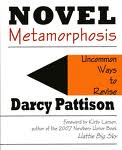
Novel Revision Retreat in a Book: Uncommon Ways to Revise
There was always a workbook, but it was a work in progress for about eight years. Then, it was time to look for a publisher for it. But here’s the problem: most publishers go for the beginning writer market. It makes sense. For every 1000 writers who set out to write an entire novel, about 100 make it. Of those, perhaps 10 will realize the need for revision and perhaps one would actually buy a book about revision. The market was small and publishers like Writer’s Digest couldn’t successfully publish it.
 But given my built in audience and the buzz surrounding the retreats, I thought I could publish it and make money doing it. I established Mims House, a niche publisher, named after the Historic Quapaw District house where I have my office. From the Blue House, I published, NOVEL METAMORPHOSIS: Uncommon Ways to Revise. As expected, it hasn’t sold thousands, but it has sold hundreds–over a thousand copies–and continues to sell at a steady pace, intermingled with spikes when I teach a retreat and participants go home and tell friends about the book. (Word of Mouth is still the best way to sell bo
But given my built in audience and the buzz surrounding the retreats, I thought I could publish it and make money doing it. I established Mims House, a niche publisher, named after the Historic Quapaw District house where I have my office. From the Blue House, I published, NOVEL METAMORPHOSIS: Uncommon Ways to Revise. As expected, it hasn’t sold thousands, but it has sold hundreds–over a thousand copies–and continues to sell at a steady pace, intermingled with spikes when I teach a retreat and participants go home and tell friends about the book. (Word of Mouth is still the best way to sell bo


























